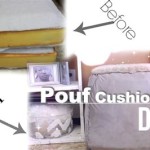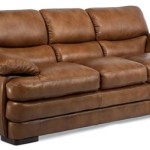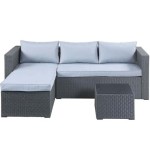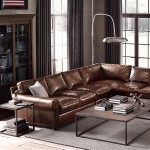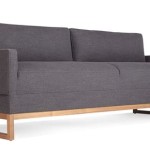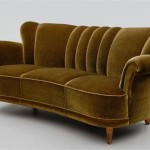Replacement Upholstered Sofa Cushions: A Comprehensive Guide
The sofa, often the centerpiece of a living space, endures significant wear and tear over its lifespan. Constant use, spills, and exposure to sunlight can degrade the upholstery and, in particular, the cushions. While a complete sofa replacement can be costly, replacing the upholstered cushions offers a practical and economical solution to revitalize the furniture’s appearance and comfort. This article provides a detailed overview of replacement upholstered sofa cushions, covering various aspects from assessing the need for replacement to choosing the right materials and considering custom options.
Assessing the Need for Replacement Sofa Cushions
Determining when to replace sofa cushions requires careful observation and evaluation. Several indicators suggest that replacement is necessary. Flattened cushions, lacking their original plumpness and resilience, are a primary sign. This compression reduces the support and comfort the sofa offers, making it less enjoyable to use. Visual signs of wear, such as torn fabric, faded colors, or excessive staining, also indicate that the cushions should be replaced or reupholstered. Furthermore, unpleasant odors that cannot be removed through cleaning or persistent discomfort experienced while sitting can signal the need for new cushions. A sagging or uneven seating surface is another clear indication, as it suggests the cushion filling has degraded and is no longer providing adequate support.
The internal structure of the cushion also plays a vital role in determining its condition. If the cushion filling is lumpy, unevenly distributed, or has lost its ability to spring back, it is likely time to replace it. The type of filling material significantly influences the lifespan and performance of the cushion. Foam, for example, can compress over time, while feather or down fillings may shift and require regular fluffing. Examining the condition of the cushion's batting, the layer of material surrounding the filling, is also important. Deteriorated batting can contribute to the overall deterioration of the cushion's shape and comfort.
Consider the age of the sofa and its cushions when assessing the need for replacement. Even with proper care, cushions have a limited lifespan. Older sofas may benefit significantly from new cushions, improving both their aesthetic appeal and functional comfort. Evaluating the cost of replacement versus the cost of a new sofa is a crucial part of the decision-making process. In many cases, replacing the cushions offers a more affordable alternative to purchasing an entirely new piece of furniture.
Types of Sofa Cushion Filling and Upholstery Fabrics
Selecting the appropriate filling and upholstery fabric is essential for achieving the desired comfort, durability, and aesthetic appeal for replacement sofa cushions. Various filling options are available, each with its own unique characteristics and benefits. High-density foam provides firm support and is resistant to compression, making it a good choice for those who prefer a more structured seating experience. Polyfiber fill offers a softer, more plush feel and is often more economical than foam. Down and feather fillings provide luxurious comfort but require more maintenance to prevent clumping and maintain their shape. A combination of foam and fiber or foam and down can offer a balance of support and softness.
The choice of upholstery fabric is equally important. The fabric must be durable enough to withstand daily use and resist wear and tear. Natural fibers, such as cotton, linen, and wool, offer breathability and a soft texture but may be more susceptible to staining and fading. Synthetic fabrics, such as polyester and microfiber, are often more durable and stain-resistant, making them a good choice for households with children or pets. Performance fabrics, specifically designed to resist stains, water damage, and fading, are an excellent option for high-traffic areas. Consider the color and pattern of the fabric in relation to the overall decor of the room. Coordinating the new cushions with existing furniture and accessories can create a cohesive and visually appealing space.
Understanding the properties of different fabrics is crucial for making an informed decision. The weave and texture of the fabric can also affect its durability and feel. Tightly woven fabrics tend to be more durable and resistant to wear, while looser weaves may offer a softer, more relaxed look. Consider the care requirements of the fabric before making a purchase. Some fabrics may require professional cleaning, while others can be easily spot-cleaned at home. Choosing a fabric that aligns with individual lifestyle and maintenance preferences is essential for long-term satisfaction.
Custom Sofa Cushion Options and Considerations
While standard-size replacement sofa cushions are readily available, custom options offer a tailored solution to specific needs and preferences. Custom cushions allow for precise measurements, ensuring a perfect fit for the sofa frame. They also provide the opportunity to select specific filling materials, fabric types, and design details, creating cushions that are uniquely suited to individual requirements. Choosing custom options involves several key considerations.
Accurate measurements are crucial for ensuring a proper fit. Carefully measure the existing cushions or the sofa frame to determine the exact dimensions required. Consider the thickness or height of the cushions, as this can affect the overall comfort and appearance of the sofa. When ordering custom cushions, it is important to communicate these measurements clearly to the manufacturer or supplier. Providing detailed specifications can help prevent errors and ensure that the finished product meets expectations.
The design and style of custom cushions can also be tailored to match the existing decor or create a new aesthetic. Choose fabric colors, patterns, and textures that complement the room's overall design. Consider adding decorative elements, such as piping, welting, or tufting, to enhance the visual appeal of the cushions. Collaborate with a designer or upholsterer to develop a cohesive design plan that reflects individual style and preferences. Custom options also extend to the shape of the cushions. While square and rectangular shapes are common, alternative shapes, such as rounded or asymmetrical designs, can create a unique and personalized look.
The cost of custom sofa cushions is typically higher than that of standard replacements, but the benefits of a tailored fit and personalized design can justify the investment. Obtain quotes from multiple suppliers to compare prices and services. Consider the reputation and experience of the manufacturer or upholsterer. Reading customer reviews and checking references can provide valuable insights into the quality of their work. Inquire about warranties and return policies to ensure peace of mind. While custom cushions may require a longer lead time for production, the end result can be a significant upgrade to the comfort and appearance of the sofa, adding value and enjoyment to the living space.
Beyond the main seating cushions, consider also replacing or updating back cushions. The back cushions contribute significantly to the overall comfort and support of the sofa. Different shapes and fillings can be utilized to provide varying levels of lumbar support. Scatter cushions, decorative pillows, can also be replaced to complement the new main cushions and further enhance the aesthetic appeal of the sofa.
When selecting a supplier, opt for companies that offer a wide range of fabric samples. This allows for a physical assessment of the fabric’s texture, color, and durability before making a final decision. Requesting samples is especially important when ordering online, as colors may appear differently on various screens. Furthermore, ensure that the supplier uses high-quality materials and construction techniques to ensure the longevity and durability of the custom cushions.
Proper care and maintenance are essential for prolonging the lifespan of replacement sofa cushions, whether they are standard or custom-made. Regular vacuuming can help remove dust and debris, preventing them from becoming embedded in the fabric. Promptly address spills and stains to prevent permanent damage. Follow the manufacturer's instructions for cleaning and maintenance. Professional cleaning may be necessary for certain fabrics. Rotating and fluffing the cushions regularly can help maintain their shape and prevent uneven wear. By investing in high-quality replacement cushions and providing them with proper care, one can significantly extend the life of their sofa and enjoy its comfort and beauty for years to come.

Foam Replacement Couch Cushions Custom Foamorder

Replacement Sofa Cushions Feather For Any Settee

Upholstery Cut To Size Replacement Cushion Sofa Seat Pads All Sizes
Seats And Back Cushions Furniture Village

Custom Replacement Sofa Cushions Advanced Upholstery

Pottery Barn Replacement Foam Seat Cushions Ucprivatecourses

Wool Replacement Couch Cushion Insert Home Of

High Density Upholstery Foam Seat Sofa Cushion Replacement Sheets Padding Com

Sofa Cushion Replacement Upholstery In London

Set Of 4 Couch Cushion Sag Repair Sofa Support For Sagging Seat High Density Upholstery Foam Padding Under Replacement 20 X 2 Inches Com

